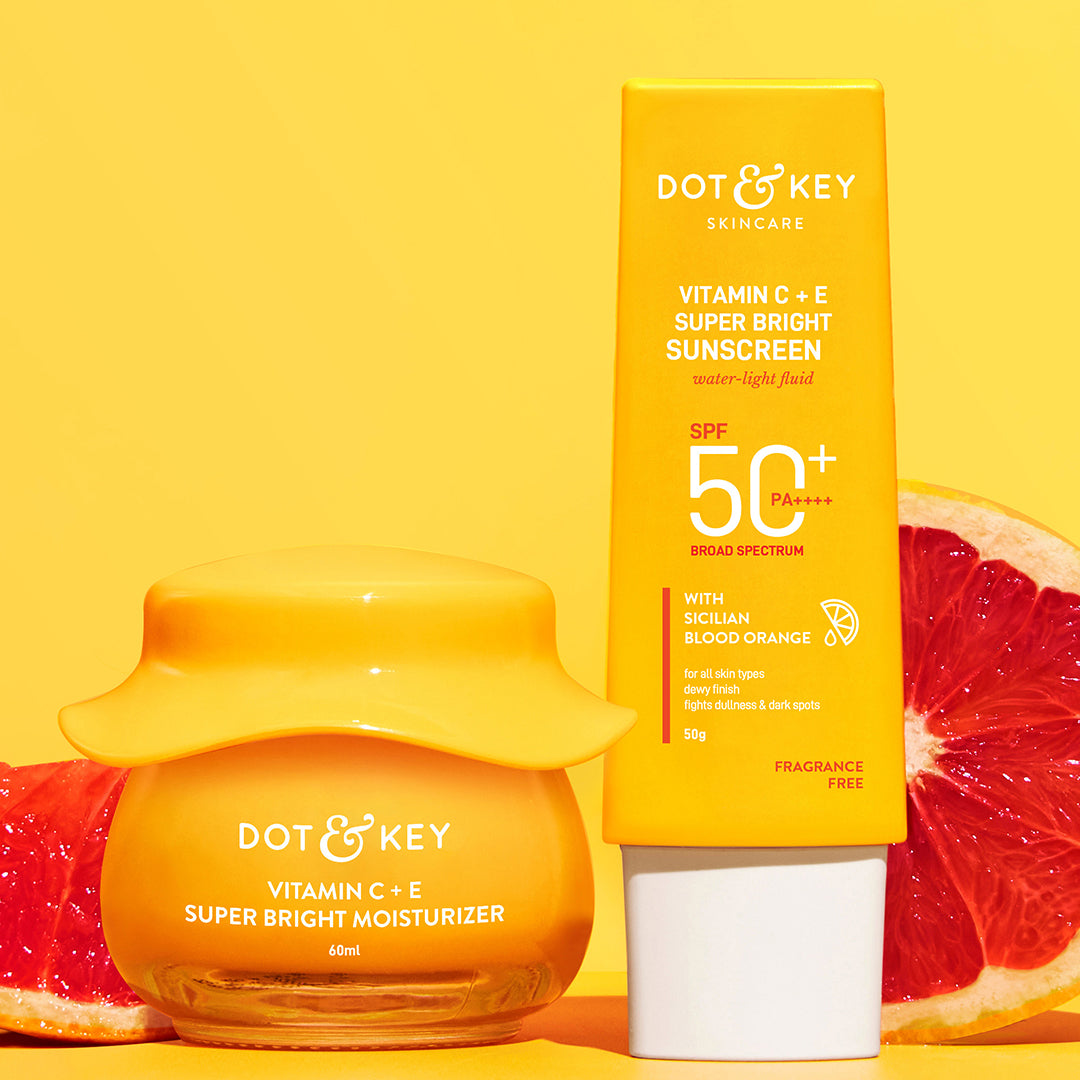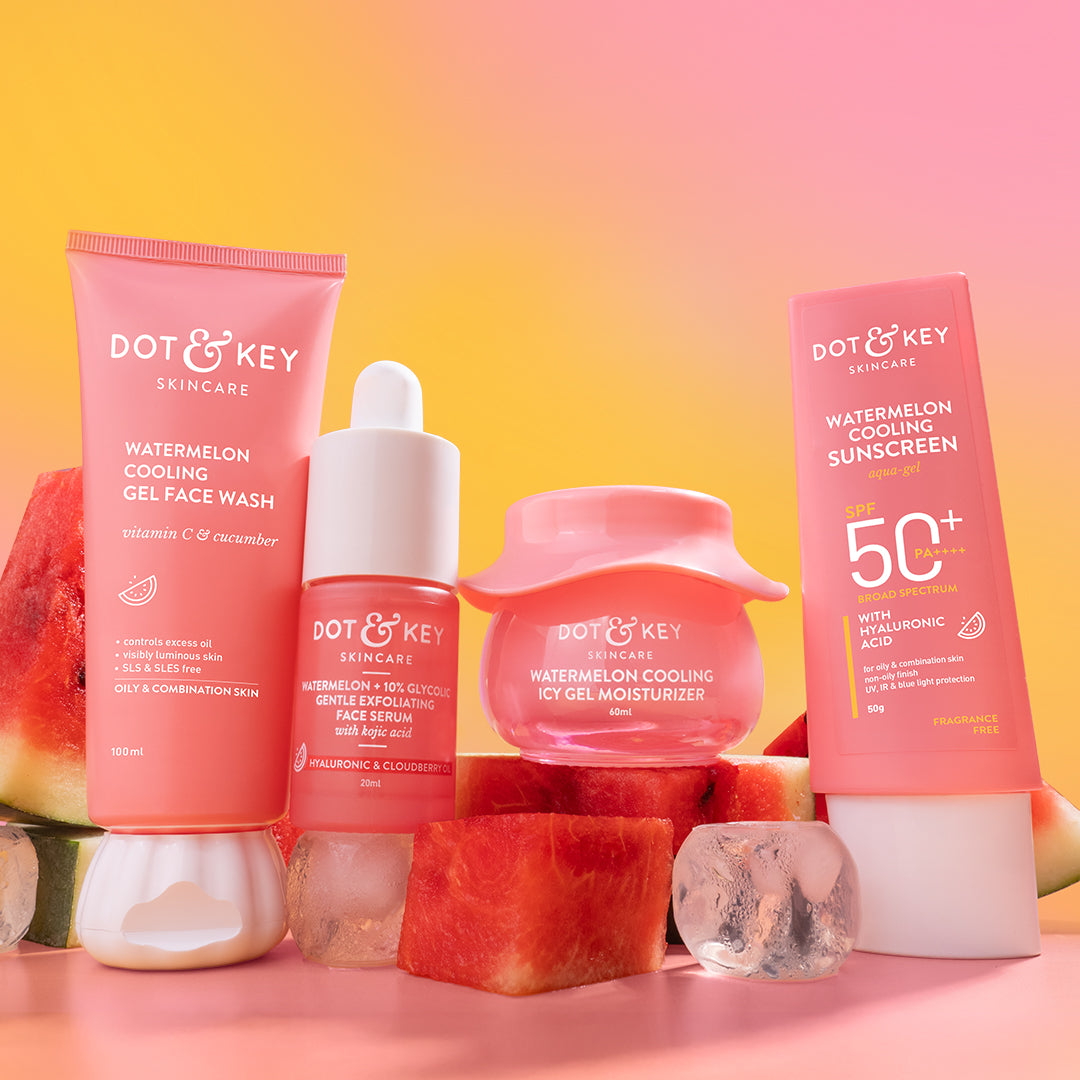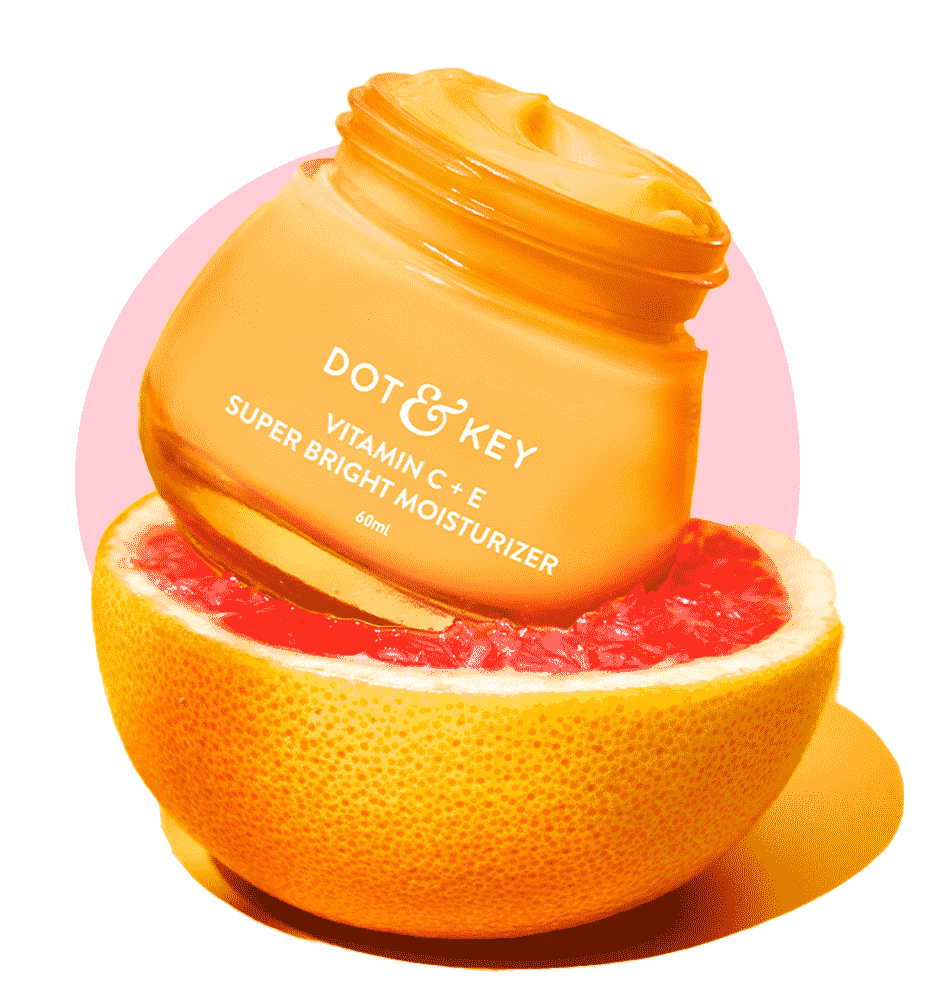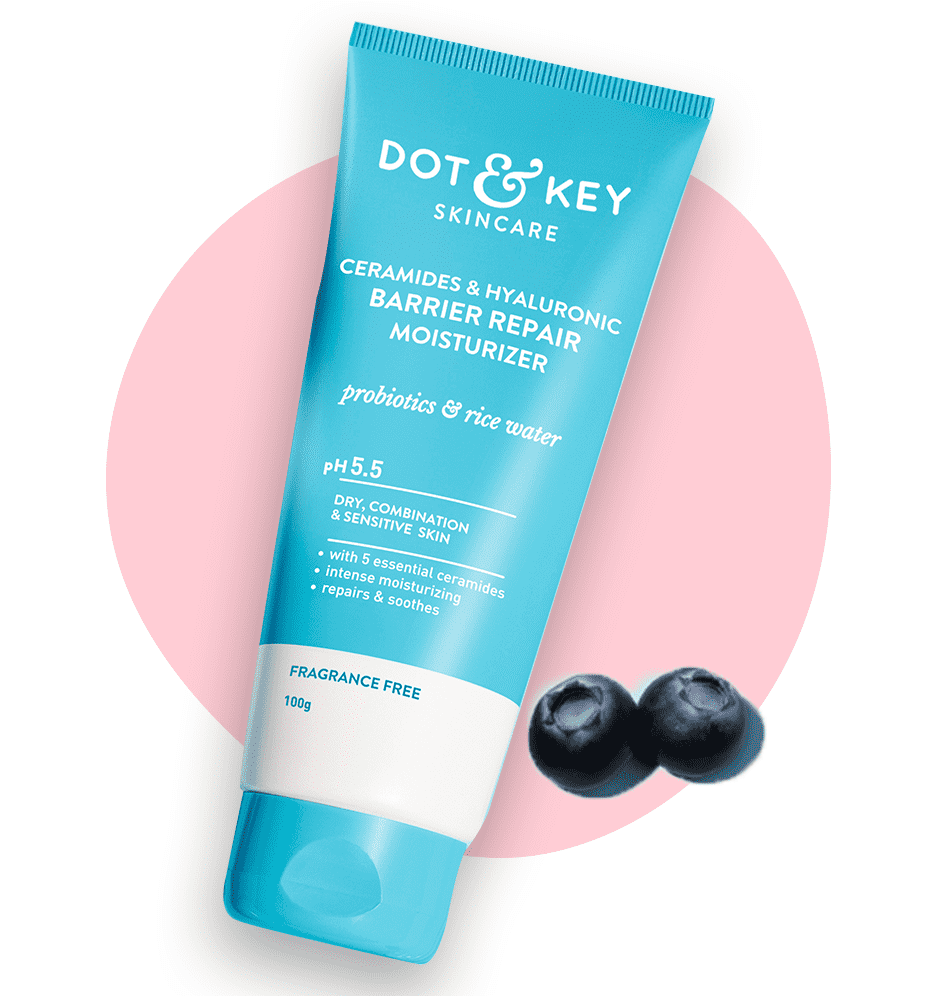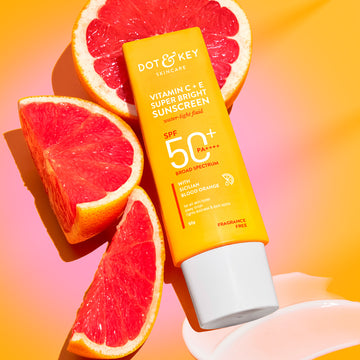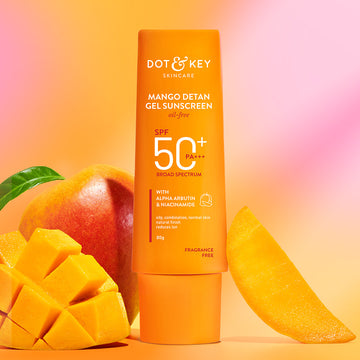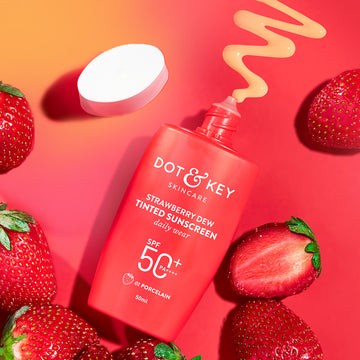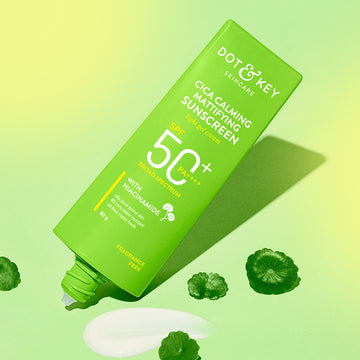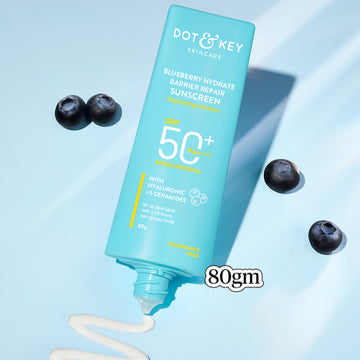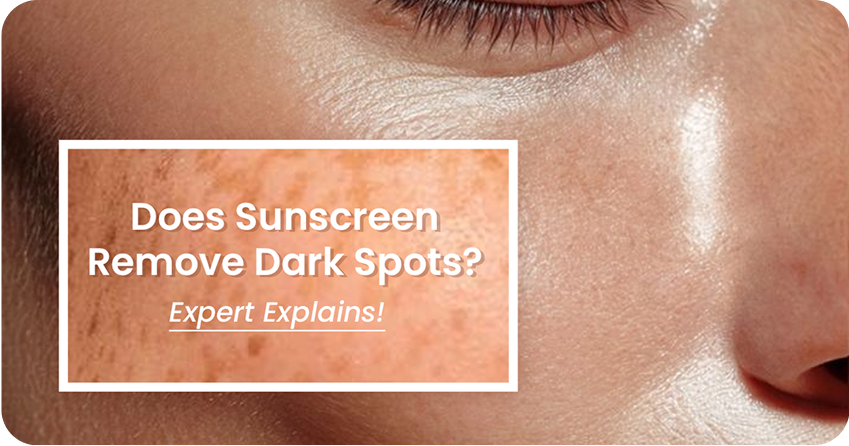
If you’re dealing with dark spots—those stubborn patches of pigmentation that seem to stick around forever—you’ve probably asked yourself:
“Can sunscreen actually help fade them?”
It’s a fair question, and the answer might surprise you.
Let’s break it down in simple terms, backed by expert insights, and clear up the confusion about sunscreen's role in treating hyperpigmentation.
First What Causes Them?
Before we dive deeper into how to treat them, let’s understand what dark spots really are and why they happen.
Also known as hyperpigmentation, dark spots are areas where your skin produces excess melanin—the pigment responsible for your skin’s color. These patches can range from light brown to deep brown, depending on your skin tone and the underlying cause.
Common Causes of Dark Spots
Here are the main culprits behind hyperpigmentation:
-
Sun Exposure
UV rays stimulate melanin production, which can lead to sunspots or worsen existing dark spots. This is one of the most common triggers. -
Post-Inflammatory Hyperpigmentation (PIH)
These are dark marks left behind after acne breakouts, cuts, or any kind of skin irritation or inflammation. -
Melasma
Often triggered by hormonal changes (like pregnancy, birth control pills, or thyroid issues), melasma appears as brown or grayish patches, especially on the face. -
Age Spots (Liver Spots)
These are flat, dark areas that usually show up on sun-exposed parts of the skin as we age—think hands, face, and shoulders. -
Skin Injuries
Even minor trauma like insect bites, burns, or harsh skin treatments can lead to lingering pigmentation.
The sun is often the underlying factor in many types of dark spots—either by directly causing them or by intensifying existing ones.
Does Sunscreen Remove Dark Spots?
Let’s get straight to the point: sunscreen does not directly remove dark spots. It’s not a magic eraser for hyperpigmentation, but it plays a huge role in preventing dark spots from getting worse and helping your skin heal over time.
Think of sunscreen as your skin’s best defence against the sun’s rays, which are a major trigger for dark spots. So, while it won’t zap those spots away on its own, it’s a critical part of any plan to fade them. Let’s unpack why.
How Sunscreen Helps with Dark Spots
While sunscreen won’t actively “remove” dark spots, it’s a game-changer for managing and preventing them. Here’s how:
-
Prevents Worsening of Dark Spots:
UV rays are like fuel for hyperpigmentation. Even a little sun exposure can darken existing spots or create new ones.
Sunscreen blocks a significant portion of UVA and UVB rays, reducing melanin production and keeping dark spots from getting more pronounced.
-
Supports Skin Healing:
When you’re using treatments to fade dark spots (like vitamin C, retinoids, or chemical exfoliants), your skin becomes more sensitive to the sun.
Sunscreen protects this sensitive skin, allowing those treatments to work effectively without UV rays undoing your progress.
-
Prevents New Spots:
Consistent sunscreen use lowers your risk of developing new dark spots, especially if you’re prone to hyperpigmentation due to acne, sun exposure, or melasma.
-
Reduces Inflammation:
Sun exposure can cause low-grade inflammation in the skin, which can worsen PIH. Sunscreen helps keep inflammation in check, giving your skin a better chance to heal.
In short, sunscreen is like the ultimate wingman for your dark spot treatments—it doesn’t steal the show, but it makes everything else work better.
Why Sunscreen Alone Isn’t Enough
If you’re hoping to fade dark spots, sunscreen is only part of the equation. To actively reduce hyperpigmentation, you’ll need to pair it with targeted treatments. Here are some popular options:
- Vitamin C: A powerful antioxidant that brightens skin and fades dark spots by inhibiting melanin production.
- Niacinamide: This multitasking ingredient reduces pigmentation, soothes inflammation, and strengthens your skin barrier.
- Retinoids: These speed up cell turnover, helping your skin shed pigmented cells faster.
- Chemical Exfoliants: Ingredients like alpha hydroxy acids (AHAs) or beta hydroxy acids (BHAs) exfoliate dead skin, revealing brighter, more even-toned skin.
- Azelaic Acid: Great for PIH and melasma, it reduces melanin production and calms irritation.
A typical routine might look like this:
- Morning: Cleanser, vitamin C serum, moisturizer, broad-spectrum sunscreen (SPF 30 or higher).
- Evening: Cleanser, retinoid or exfoliant (a few times a week), niacinamide, moisturizer.
Pro tip: Always introduce new actives slowly to avoid irritation, and never skip sunscreen when using these treatments—they make your skin more sun-sensitive.
Choosing the Right Sunscreen for Hyperpigmentation
Not all sunscreens are created equal, especially when you’re tackling dark spots. Here’s how to pick one that maximizes protection and complements your routine:
-
Go Broad-Spectrum:
Choose a sunscreen labelled “broad-spectrum” to protect against both UVA (which worsens hyperpigmentation) and UVB (which causes burning) rays. -
Aim for SPF 30 or Higher:
SPF 30 blocks about 97% of UVB rays, while SPF 50 blocks 98%. For hyperpigmentation, higher SPF can be your go-to, especially if you’re outdoors a lot. -
Consider Physical Sunscreens:
Mineral sunscreens with zinc oxide or titanium dioxide reflect UV rays and are less likely to irritate sensitive skin. They’re great for those prone to PIH or melasma. -
Look for Tinted Options:
Tinted sunscreens with iron oxides can provide extra protection against visible light, which may also contribute to hyperpigmentation, especially in darker skin tones. -
Match Your Skin Type:
- Oily Skin: Opt for lightweight, non-comedogenic formulas labelled “matte” or “gel.”
- Dry Skin: Choose hydrating sunscreens with ingredients like hyaluronic acid or glycerin.
- Sensitive Skin: Stick to fragrance-free, mineral-based sunscreens to minimize irritation.
- Darker Skin Tones: Look for sheer or tinted formulas to avoid a white cast.
-
Check for Added Benefits:
Some sunscreens include brightening ingredients like niacinamide or antioxidants, which can support your dark spot goals.
How to Use Sunscreen Like a Pro
To get the most out of your sunscreen and protect those dark spots, follow these tips:
- Apply Enough: Use about 1/4 teaspoon for your face and 1 ounce (a shot glass full) for your body.
- Apply Early: Put it on 15-30 minutes before sun exposure to let it absorb.
- Reapply Often: Every 2 hours, or after swimming, sweating, or towelling off.
- Don’t Skip It: UV rays are present even on cloudy days or through windows, so wear sunscreen daily.
- Layer Correctly: Apply sunscreen as the last step in your morning skincare routine, after moisturizer but before makeup.
Other Sun-Smart Tips for Managing Dark Spots
Sunscreen is your MVP, but these habits can amplify your results:
- Seek Shade: Avoid direct sun exposure, especially between 10 a.m. and 4 p.m., when UV rays are strongest.
- Wear Protective Clothing: Hats, sunglasses, and UPF clothing add an extra layer of defence.
- Be Consistent: Daily sunscreen use, even in winter or on cloudy days, is key to preventing new spots.
- See a Dermatologist: If dark spots persist or worsen, a derm can recommend treatments like chemical peels, laser therapy, or prescription creams.
Final Thoughts
So, does sunscreen remove dark spots? Not directly, but it’s an essential tool for preventing them from getting darker and supporting your skin’s healing process. By blocking UV rays, sunscreen creates the perfect environment for your brightening treatments to work their magic. Pair it with targeted actives, apply it correctly, and stay consistent, and you’ll be on your way to a more even, radiant complexion.

